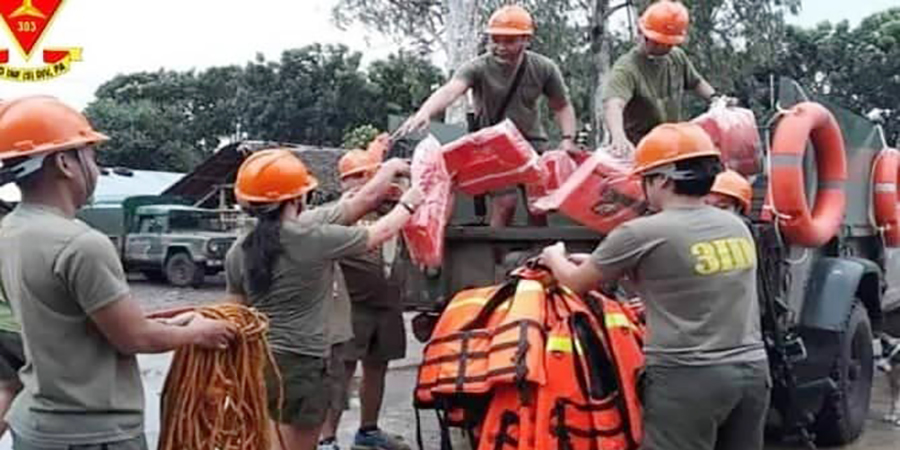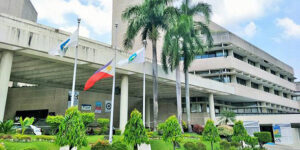BY GILBERT P. BAYORAN

The Philippine Coast Guard yesterday suspended trips of sea vessels between the port of Escalante City in Negros Occidental and port of Tabuelan in Cebu, following the effects of Tropical Depression Agaton.
Tabuelan has been placed under Tropical Cyclone Wind Signal Number 1 by the state weather Philippine Atmospheric, Geophysical and Astronomical Services Administration (PAGASA).
This also developed as the Provincial Disaster Risk Reduction and Management Council (PDRRMC) in Negros Occidental placed all disaster response councils and operation centers on red alert status to prepare for the impending threat Tropical Depression “Agaton”.
PAGASA reported that northern Negros will experience heavy to intense rains today.
A memorandum issued by Provincial Administrator Rayfrando Diaz on behalf of the authority of Gov. Eugenio Jose Lacson said that the raising to red alert status, since April 9, is for close monitoring, consolidation of reports, and coordination with concerned government agencies and stakeholders.
Brig. Gen. Inocencio Pasaporte, 303rd Infantry Brigade commander, also placed its infantry units and Army reservists on alert stance in preparation for TD Agaton.
Pasaporte said that the Philippine Army in Negros is in a high state of promptness, preparedness and commitment. We are always ready and alert, both in times of natural calamities and man-made disasters, especially in anticipation of TD Agatonsince the lives and safety of people are most important, he stressed.
Under red alert, there will be activation of the response clusters in the region, leading to evacuation for residents living in high-risk areas by the local DRRM councils, communication of weather-related advisories to the community level by the provincial DRRM councils and LDRRMCs.
In reference to the agreements during the Region 6 Pre-Disaster Risk Assessment Analyst and Core Group meetings for the mentioned weather system, Diaz said that PDRRMC Emergency Preparedness and Response (EPR) has been activated to Charlie Protocol, which will be subject to change, depending on updates on the hazard situation and risk levels.
BACOLOD, WV STATUS
The Regional Disaster Risk Reduction and Management Council in Western Visayas placed all local government units in the area under “red alert status” as the low-pressure area spotted east of Eastern Samar has developed into a tropical depression that will be known as “Agaton”.
RDRRMC officer-in-charge Ma. Aletha Nogra said in Memorandum 22 issued Saturday, a copy of which was furnished the Public Information Office by Dr. Anna Maria Laarni Pornan, head of the Bacolod City DRRMO.
PAGASA reported that “Agaton” continues to move west to the coastal waters of Balangiga in Eastern Samar. PAGASA said that Western Visayas may experience light to moderate rains, with occasional heavy rains.
It has maximum sustained winds of 45 km per hour near the center and gustiness of up to 55 km per hour, and is slowly moving west northwest.
The Philippine Atmospheric, Geophysical and Astronomical Services Administration reported thatWestern Visayas may experience light to moderate rains, with occasional heavy rains.
Four other regions – Caraga, Northern Mindanao, Central Visayas and Eastern Visayas – were also placed under “red alert status” with their Emergency Preparedness Response already activated to Charlie Protocol, including the whole of Region 6.
Region 6 is comprised of the highly-urbanized cities of Bacolod and Iloilo and the provinces of Aklan, Antique, Capiz, Guimaras, Iloilo and Negros Occidental.
Putting the five regions under the Charlie Protocol for their EPR means that the said LGUs are considered “high risk areas” and residents in these places, particularly those living near bodies of water or coastal communities should take precautionary measures.
With the Charlie Protocol in place, the National DRRMC said that LGUs in these areas must send warnings and advisories, cascade preparedness directions; activate Emergency Operations Center to red alert, activate majority or all response clusters;
Recommend for work and/or class suspension, preemptively or forcibly evacuate communities, mobilize rapid deployment teams in strategic areas, provide advance augmentation of resources;
Account, assess and ensure operational readiness of response facilities (such as EOCs and evacuation centers), as well as critical lifelines (water, communications, power, etc.);
Monitor secondary hazards (such as dam release, flashfloods, etc.), secure properties such as small sea vessels and other movable assets to safer grounds, ensure maritime safety of all watercrafts, issue appropriate travel advisory, arrange for advance assistance for communities as authorized and release situational report.*







